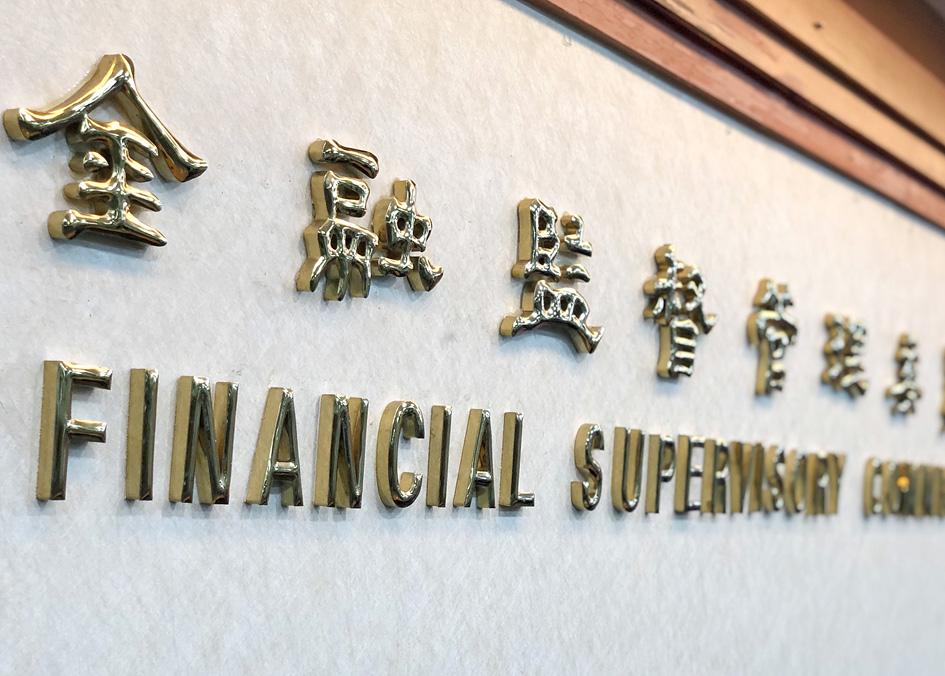Local banks’ combined profit grew in March, for the first time since May last year, thanks to an increase in investment gains and interest income, data released by the Financial Supervisory Commission on Thursday showed.
The banks’ combined pretax profits grew 76 percent year-on-year to NT$32 billion (US$1.15 billion) in March, ending 10 consecutive months of annual declines, the data showed.
Banks recorded an annual increase of NT$14.25 billion in combined investment gains as financial markets boomed, while their net interest income rose by NT$1.4 billion, the data showed.

Photo: Kelson Wang, Taipei Times
In the first quarter, banks’ pretax profits rose 10.9 percent year-on-year to NT$89.76 billion, it showed.
Domestic bank branches saw their combined pretax profits rise 25 percent year-on-year to NT$59.9 billion in the first quarter, accounting for 66.8 percent of all profits, while banks’ offshore banking units, overseas branches and operations in China reported annual declines of 3 percent, 23 percent and 55.5 percent in pretax profits respectively, the data showed.
Overseas branches’ declining profits could be attributed to several banks setting higher provisions for bad loans in Hong Kong, while fluctuating exchange rates between the Chinese yuan and US dollar caused a drop in profits at Chinese branches, the commission said.
Banks’ non-performing loans totaled NT$72.5 billion as of the end of March, up NT$1.8 billion from a month earlier, while their non-performing loan ratio remained flat at 0.23 percent, the data showed.

SEMICONDUCTORS: The firm has already completed one fab, which is to begin mass producing 2-nanomater chips next year, while two others are under construction Taiwan Semiconductor Manufacturing Co (TSMC, 台積電), the world’s largest contract chipmaker, plans to begin construction of its fourth and fifth wafer fabs in Kaohsiung next year, targeting the development of high-end processes. The two facilities — P4 and P5 — are part of TSMC’s production expansion program, which aims to build five fabs in Kaohsiung. TSMC facility division vice president Arthur Chuang (莊子壽) on Thursday said that the five facilities are expected to create 8,000 jobs. To respond to the fast-changing global semiconductor industry and escalating international competition, TSMC said it has to keep growing by expanding its production footprints. The P4 and P5

DOWNFALL: The Singapore-based oil magnate Lim Oon Kuin was accused of hiding US$800 million in losses and leaving 20 banks with substantial liabilities Former tycoon Lim Oon Kuin (林恩強) has been declared bankrupt in Singapore, following the collapse of his oil trading empire. The name of the founder of Hin Leong Trading Pte Ltd (興隆貿易) and his children Lim Huey Ching (林慧清) and Lim Chee Meng (林志朋) were listed as having been issued a bankruptcy order on Dec. 19, the government gazette showed. The younger Lims were directors at the company. Leow Quek Shiong and Seah Roh Lin of BDO Advisory Pte Ltd are the trustees, according to the gazette. At its peak, Hin Leong traded a range of oil products, made lubricants and operated loading

Citigroup Inc and Bank of America Corp said they are leaving a global climate-banking group, becoming the latest Wall Street lenders to exit the coalition in the past month. In a statement, Citigroup said while it remains committed to achieving net zero emissions, it is exiting the Net-Zero Banking Alliance (NZBA). Bank of America said separately on Tuesday that it is also leaving NZBA, adding that it would continue to work with clients on reducing greenhouse gas emissions. The banks’ departure from NZBA follows Goldman Sachs Group Inc and Wells Fargo & Co. The largest US financial institutions are under increasing pressure

TRENDS: The bitcoin rally sparked by US president-elect Donald Trump’s victory has slowed down, partly due to outflows from exchange-traded funds for the token Gold is heading for one of its biggest annual gains this century, with a 27 percent advance that has been fueled by US monetary easing, sustained geopolitical risks and a wave of purchases by central banks. While bullion has ticked lower since US president-elect Donald Trump’s sweeping victory in last month’s election, its gains this year still outstrip most other commodities. Base metals have had a mixed year, while iron ore has tumbled, and lithium’s woes have deepened. The varied performances highlight the absence of a single, over-riding driver that has steered the complex’s fortunes, while also putting the spotlight